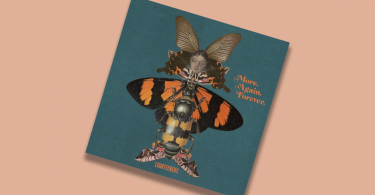Recent news that Alex Turner and Miles Kane are resurrecting The Last Shadow Puppets got me tittering with glee. 2008’s The Age Of The Understatement was a sepia-tinged retro-pop treatise introducing a new generation to esoteric mavericks like Scott Walker. It was a delicious dalliance away from Turner’s day job with Arctic Monkeys, and encouraged a review of his previous output. Upon reflection, 2011’s Suck It And See, a continuation of the radical departure from the formulaic indie of their early years, is unequivocally their most complete album.
Varied influences
Turner’s versatility as a songwriter, evident on The Age Of The Understatement, flourished on Suck It And See as he supped from a new pool of influences. The barked lyrical fisticuffs and spiky riffs of their 2006 debut Whatever People Say I Am, That’s What I’m Not had long since vanished, replaced in favour of a sunset glimmer wrapped in Turner’s dusky croon and bubble-gum basslines eliciting late eighties indie and rock music from both sides of the Atlantic.
Alice in Chains are bizarrely elicited on the harmony laden crunch of ‘Don’t Sit Down ‘Cos I’ve Moved Your Chair’. The shadows of Nirvana and Queens of the Stone Age loom over the frenetic ‘Library Pictures’, on which Matt Helders’ drumming bludgeons sense and sensibility. Fans of 2009’s arid, leather-jacketed grease rock Humbug were sated, but The House of Love-esque droplets like ‘Black Treacle’ and the deliriously titled ‘The Hellcat Spangled Shalalala’ surprised many with their unexpected iridescence. Tuneful and angular, accessible and smart, they are the apotheosis of Turner’s ability to combine obtuse rhythms with classic pop.
[video:https://www.youtube.com/watch?v=h1vYbHHhqYE]Suck It And See alienated those yearning for ‘A Certain Romance’ part twenty-seven, but recruited new admirers impressed by the different direction. It adopted Humbug’s muscular tangent, and enhanced the band’s reputation as unpredictable shapeshifters. So why is their fourth album their greatest artistic statement? The variety of musical flavours was made apparent on the subtle artwork which dared fans old and new to try an unprecedented sound. The joy of the record is mainly located in guitarist Jamie Cook’s scratchy, C86-aping and bassist Nick O’Malley’s chunky basslines. On ‘Reckless Serenade’, the band perfect the recipe, creating sugary indie-pop without being overbearingly mawkish.
The last three tracks fuse a warm melancholia through Turner’s sorrowful vocals with uplifting melodies as they update The Beach Boys’ melodically carefree template. ‘Love Is A Laserquest’ is a twilit lament pierced by moonbeams, Turner berating an ex-lover for her manipulative tendencies; the title track is a Beach Boys meets Ride festival of light and wryness; ‘That’s Where You’re Wrong’ transcends space and time as love, loss, optimism and pain mix in a rapturous, Stone Roses-blessed rush. From start to finish, the band sounds utterly at ease with their new identity and reward listeners with a tantalising cocktail of scuzz-rock and jangle-pop confectionary.
The euphoria AM lacks
Arctic Monkeys have plenty of wonderful songs to choose from when they compose their set lists, but frustratingly Suck It And See’s constituents never feature prominently. I know I would much rather hear the shine and thunder of ‘That’s Where You Wrong’ than the atrocious ‘Fluorescent Adolescent’, but the band seem devoted to promoting 2013’s AM that won them wide critical acclaim. A gig made up of Suck It And See’s tracks would show that it is melodically superior to their other sterling efforts. It has the euphoria AM lacks, the refined grot Humbug so nearly achieved and the accomplished musical nous their debut wasn’t interested in. Suck It And See is quite easily one of the best albums of the past fifteen years and an album the Arctics will never surpass.
What’s your favourite Arctic Monkeys album? Let us know in the comments below!








